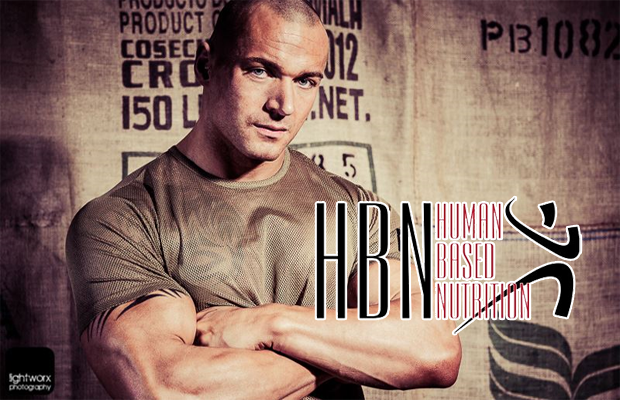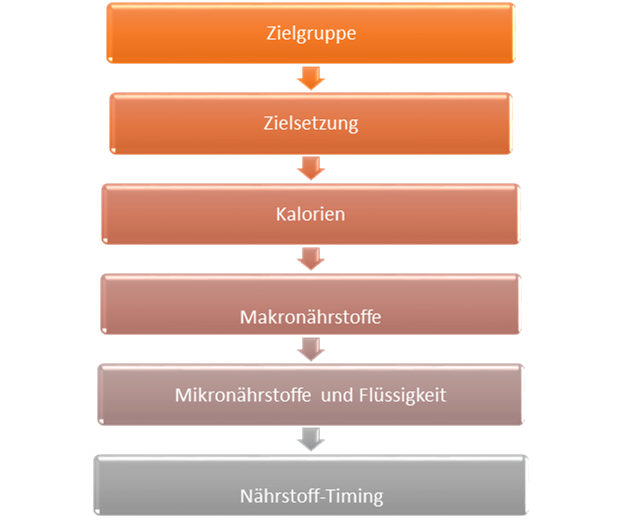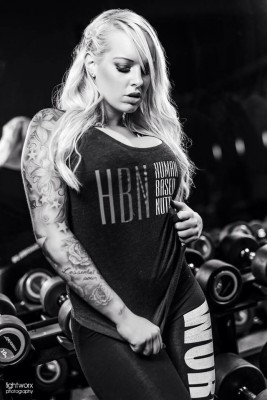HBN – Human Based Nutrition

The "medium carb diet"
Dear readers,
I intentionally added the subtitle "The Medium-Carb-Diet" to my article, as it seems to be almost mandatory nowadays to opt for one of the two camps, i.e. either (no) low-carb or high To choose carb and live by it. The book on my nutritional concept HBN (Human Based Nutrition) was already published in March 2014, which has not only been awarded a literary prize, but has also been read a thousand times and has shown a number of athletes a balanced and yet maximally goal-oriented way to become athletic feed without having to strongly decimate one of the three macronutrients.
The correct design of macronutrients is of course only a small part of what should be specified in a complete nutritional concept, which is why today's article presents some of the key points from Human Based Nutrition to give you dear readers a small impression.
Have fun!
HBN - The priorities

The attached illustration has not yet been published anywhere, but it does very well reflect the six important points that every athlete should deal with when it comes to nutritional optimization. Representation is purposely a process, not a pyramid, as there are ultimately no real priorities. Priorities mean compromises and if you really want to improve your diet to the best possible level, you should delete this term from your vocabulary. All six points mentioned build on one another, they all have to be worked through and for this reason it does not matter whether the amount of calories is more important than the timing of nutrients (a widely discussed point) or whether it is perhaps more important to yourself rather focus on the micronutrients than on the “macros”. "It doesn't matter" - only those who take care of all six points can claim to be following the optimal path in matters of nutrition. How this will look individually, whether vegan, ketogenic or via intermittent fasting, does not matter so far, it is about the basis
Conclusion: Six priorities are the basis of any nutritional optimization, regardless of whether one of the points is more important than the other
target group
Point 1 is aimed at something that Human Based Nutrition is the first to consider differentiated in a nutrition concept for athletes, namely the difference between
- Mann
- Mrs
- Best-Ager
It is a mystery to me why I was one of the first who fundamentally dealt with the differences between these different target groups, because they are obvious.
Women are different from men in
- lower levels of testosterone
- higher levels of estrogen
- a lower proportion of muscle mass (approx. 25-30% compared to 40%)
- a different muscle fiber size and number of mitochondria
- a worse possibility of strength development
- a lower basal metabolic rate
- a higher body fat content
- a lower blood volume (therefore poor thermoregulation)
- a higher increase in catecholamines associated with exercise
- a higher level of triglycerides
- a preferred use of fatty acids as an energy source
All these differences are factual and apply more or less strongly to all women who like to do sports. Simply ignoring them and thus making identical nutritional recommendations for men and women not only lacks any basis, but is also not goal-oriented, which is why the task in Human Based Nutrition was to incorporate all these factors into nutritional guidelines.
It becomes very specific again for both genders when they enter the best-ager age, which is spoken of from around 40 years of age. We all have to deal with some changes, with different degrees of individuality.
- Decreased pancreatic function
- Decreased absorption capacity of the intestine (proteins, fatty acids, micronutrients)
- Decreased production of enzymes that break down protein
- Reduced gastric acid secretion
- Reduced formation of thyroid hormone
- Reduced production of other hormones, including testosterone and estrogen
- Age-related loss of muscle mass
... to name just a few. They all make specific guidelines for this target group absolutely necessary. Here, too, before HBN, there was no concept in sports nutrition with corresponding concrete solutions, which is why I made it my mission to change this.
Conclusion: A number of existing nutritional concepts offer precise and sometimes good guidelines, but generalize them so that one could believe that there are no relevant differences between genders and age groups. HBN closes this gap with specific guidelines.
Goal setting
Priority 2 deals with the goal setting, which can turn out completely different depending on the sport and starting situation. HBN distinguishes between objectives:
- Muscle building
- Fat loss
- Anaerobic increase in performance (e.g. martial arts, ball sports, team sports)
- Aerobic increase in performance (e.g. long-distance running, marathon)
.... and has specific requirements ready for this which are specified in the following priorities.
Conclusion: The correct nutritional strategy can only be developed once the objective is known. HBN offers separate solutions for all of these goals
In principle, the wheel cannot be reinvented when it comes to calories. Those who are looking for long-term success in terms of muscle building will not be able to avoid at least an isocaloric, or better yet, hypercaloric diet, while those who intend to get rid of body fat have to create a caloric deficiency situation in order to get the body to release depot fat. Anyone who is interested in increasing performance must also at least eat according to their needs in order to improve in this regard.
So far so good, but now it's getting interesting….
The problem for many trainees is the design and interpretation of the terms “deficit” and “excess”. From several studies we know about unsightly adaptations that result with too pronounced constant calorie deficit. On the one hand, adaptive thermogenesis leads to a reduction in the basal metabolic rate, a decrease in the so-called NEAT (non-exercise activity thermogenesis) and also the thermal effect based on food (TEF). On the other hand, hormone levels such as testosterone, thyroid hormone, leptin, ghrelin, insulin and cortisol also shift and there are changes in the so-called "mitochondrial efficiency", which is about the control and activity of so-called decoupling proteins (UCP).
What can go wrong in one direction also has unpleasant side effects in the other. It is known from some studies that too high a body fat content has a negative effect on muscle function and even thwarts muscular adaptations. In addition to the macronutrient distribution, one primarily ensures such a condition with incorrectly planned calories. All this knowledge is taken into account in HBN and ultimately ends in specific caloric specifications for the respective target groups and objectives.
Conclusion: The calorie balance determines the success or failure of any nutritional concept. However, just “deficit” and “sur” are not enough, even if this is often propagated. There must be more specific guidelines that can be found in HBN
Macronutrients
The next important step is to distribute the calorie target to the individual macronutrients. Now we are in the big battle “High Carb vs. Low Carb ”arrived.
But before I get into that, a word about protein. There is almost endless literature on the protein requirements of athletes. While conservative institutions like the DGE still adhere to a target of 0.8 g per kilogram of body weight, the IOC, International Society of Sports Nutrition or American College of Sports Medicine set amounts in the range of 1.4 to 2.0 grams of protein per kilogram Body weight fixed for athletes. HBN for isocaloric and hypercaloric nutrition is based on the upper limit of these recommendations and even goes to a recommended amount of 2.5g per kilogram of body weight (always based on the target weight) in hypocaloric phases. The higher amount of protein with a predominant reduction in calories is due to a higher tendency towards gluconeogenesis, a high thermal effect of protein and a strongly satiating effect based on Protein. 2.5g protein per kilogram of body weight is also considered a safe amount.
With the right amount of protein in your luggage, it is now time to determine what is necessary carbohydrates. It can be said that HBN is neither on the side of low-carb nor on the side of high-carb, but rather goes its own way, which is solely based on the need. In most cases the result is a “medium carb” approach. Many advocates of one or the other form of nutrition throw objectives together and this creates an insoluble knot. What is certain is that a carbohydrate-conscious diet in terms of health markers is the better way for the average person, especially in terms of cardiovascular markers. On the other hand, when it comes to weight loss alone, there is no clear winner. For athletes, in addition to weight management and health, muscle mass and performance always play a role. Studies show that, depending on the requirements and body composition, low-carb is not always the right approach, but they also show that it makes no sense to overdo it with carbohydrates. As already mentioned, the right path is found in the middle and therefore within the framework of the necessary need for carbohydrates. This is generally made up of these factors:
- Exercise intensity
- Load duration
- Training status of fat metabolism
- Composition of the diet
- Carbohydrate intake before and during exercise
In HBN I go exactly this way and try to give my followers highly individualized specifications for carbohydrates. In my opinion and also in the eyes of a study by Jeudenkamp, an important marker for this is on the one hand the glycogen capacity, which is made up of a hepatic and muscular component, and on the other hand the glycogen consumption.
After determining the correct amount of protein and carbohydrates, the remaining calories are eliminated Fatty acids. Here, too, I give precise specifications with regard to distribution and weighting. in terms of omega fatty acids and a few other important factors.
Conclusion: With regard to macronutrients, HBN takes a completely independent, individualized and needs-oriented path that differs from all other concepts
Micronutrients and fluids
For most trainees and most of the other concepts, after optimizing the points discussed so far, it is over. A big mistake when you consider the sufficient influence vitamins and minerals have on our body. Vitamins are required for a number of metabolic reactions, they are used to regulate and utilize macronutrients and minerals, are indispensable for a strong immune system, are required for the development of enzymes and, last but not least, are indispensable for the development of cells and tissue structures. (to name just a few functions). Two things about vitamins are particularly interesting for athletes:
- They are among the essential substances (must be supplied through food)
- Athletes have an increased need at least for some representatives (Wiliams 2004)
Since the intake of micronutrients is related to the amount of calories consumed, athletes in particular have to be careful with the subject of vitamins who, for whatever reason, have a hypocaloric or very one-sided diet (vegan, ketogenic ...)
The supply of bulk and trace elements (minerals) is an important topic for every athlete, after all, they are involved in tissue structure, hormone synthesis, the structure of blood cells, enzyme activation, maintenance of tissue tension and the transmission of stimuli. Sweat-inducing sporting activities in particular have increased the property with fluids Minerals (electrolytes) to wash out, especially sodium. Independently of this, studies show that a certain proportion of the population has insufficient supply of calcium (Bailey 2010), magnesium (Rosanoff 2012), iodine (Pearce 2013, Zimmermann 20112), or iron (McLean 2009), which should not be underestimated.
In this context, the topic of fluid intake can also be addressed excellently. Here the athlete scene is more known for taking in too much of a good thing than too little, which is why it seemed important to me in HBN to address the consequences of an undersupply as well as an oversupply with fluids and then of course to underpin the whole thing with the right specifications .
Conclusion: Excluding micronutrients and the right amount of fluids when it comes to nutrition is like putting two good and two bad tires on a racing car. Best times cannot be achieved with it, which is why HBN also provides information on this
Nutrient timing
The last item on the priority list deals with nutrient timing, which is one of the hottest topics of discussion. While there is now broad agreement that we do not have to consume protein every 2 to 3 hours and that carbohydrates are not a problem in certain situations even after 6 p.m., opinions differ on the targeted one Use of nutrients to make our workouts. Although there is no 100% relevance for all exercisers, as factors such as training intensity, training volume, training duration and other nutritional behavior influence the result, I am still speaking to HBN based on numerous studies on glycogen resynthesis, proteolysis, protein build-up and real muscle growth for a targeted workout-Nutriton out. In Human Based Nutrition I also have an interesting approach for the design of breakfast, which differs fundamentally from the guidelines of "old-school bodybuilding".
Conclusion: Since a large part of all athletes can benefit from a targeted timing of the macronutrients, HBN also has theoretical basics and practical guidelines available, which vary depending on the target group and objectives
I hope today I was able to give you a little insight into my nutritional concept and thus into my approaches to the design of nutrition for active people. Nutrition is definitely a topic that should be dealt with in more detail - a large part of your athletic success but also your lifelong health depends on it!
Sporty greetings
Holger Gugg
photos
Holger Gugg
lightworx photography, .com/lwx.photography
sources
Book - Human Based Nutrition - Holger Gugg - Novum Verlag
Sport and Pregnancy - Ludwig Maximilians University Munich - Lena Erhard
Dulloo AG, Jacquet J: Adaptive reduction in basal metabolic rate in response to food deprivation in humans: a role for feedback signals from fat stores. Am J Clin Nutr 1998, 68:599–606.
Doucet E, St-Pierre S, Almeras N, Despres JP, Bouchard C, Tremblay A: Evidence for the existence of adaptive thermogenesis during weight loss. Br J Nutr 2001, 85:715–723.
Ravussin E, Burnand B, Schutz Y, Jequier E: Energy expenditure before and during energy restriction in obese patients. Am J Clin Nutr 1985, 41:753–759.
Leibel RL, Rosenbaum M, Hirsch J: Changes in energy expenditure
resulting from altered body weight. N Engl J Med 1995, 332:621–628.
Rosenbaum M, Hirsch J, Gallagher DA, Leibel RL: Long-term persistence of adaptive thermogenesis in subjects who have maintained a reduced body weight. Am J Clin Nutr 2008, 88:906–91
Rosenbaum M, Leibel RL: Adaptive thermogenesis in humans. Int J Obes 2010, 34(Suppl 1):S47–S55.
Weigle DS: Contribution of decreased body mass to diminished thermic effect of exercise in reduced-obese men. Int J Obes 1988, 12:567–578.
Weigle DS, Brunzell JD: Assessment of energy expenditure in ambulatory reduced-obese subjects by the techniques of weight stabilization and exogenous weight replacement. Int J Obes 1990, 14(Suppl 1):69–77. discussion 77–81.
Tappy L: Thermic effect of food and sympathetic nervous system activity in humans. Reprod Nutr Dev 1996, 36:391–397.
Ravussin E, Lillioja S, Anderson TE, Christin L, Bogardus C: Determinants of
24-hour energy expenditure in man. Methods and results using a respiratory
chamber. J Clin Invest 1986, 78:1568–1578.
Miles CW, Wong NP, Rumpler WV, Conway J: Effect of circadian variation in energy expenditure, within-subject variation and weight reduction on thermic effect of food. Eur J Clin Nutr 1993, 47:274–284.
Weigle DS, Brunzell JD: Assessment of energy expenditure in ambulatory reduced-obese subjects by the techniques of weight stabilization and exogenous weight replacement. Int J Obes 1990, 14(Suppl 1):69–77. discussion 77–81.
Levine JA: Non-exercise activity thermogenesis (NEAT). Best Pract Res Clin Endocrinol Metab 2002, 16:679–702.
Weyer C, Walford RL, Harper IT, Milner M, MacCallum T, Tataranni PA, Ravussin E: Energy metabolism after 2 y of energy restriction: the biosphere 2 experiment. Am J Clin Nutr 2000, 72:946–953.
Rossow LM, Fukuda DH, Fahs CA, Loenneke JP, Stout JR: Natural bodybuilding competition preparation and recovery: a 12-month case study. Int J Sports Physiol Perform 2013, 8:582–592.
http://www.ncbi.nlm.nih.gov/pubmed/20300017
Kim B: Thyroid hormone as a determinant of energy expenditure and the basal metabolic rate. Thyroid 2008, 18:141–144.
Margetic S, Gazzola C, Pegg GG, Hill RA: Leptin: a review of ist peripheral actions and interactions. Int J Obes Relat Metab Disord 2002, 26:1407–1433.
http://www.ncbi.nlm.nih.gov/pubmed/22495883
Maestu J, Jurimae J, Valter I, Jurimae T: Increases in ghrelin and decreases in leptin without altering adiponectin during extreme weight loss in male competitive bodybuilders. Metabolism 2008, 57:221–225.
Rooyackers OE, Nair KS: Hormonal regulation of human muscle protein metabolism. Annu Rev Nutr 1997, 17:457–485.
Simmons PS, Miles JM, Gerich JE, Haymond MW: Increased proteolysis. An effect of increases in plasma cortisol within the physiologic range. J Clin Invest 1984, 73:412–420.
Rolfe DF, Brand MD: Contribution of mitochondrial proton leak to skeletal muscle respiration and to standard metabolic rate. Am J Physiol 1996, 271:C1380–1389.
Young JB, Saville E, Rothwell NJ, Stock MJ, Landsberg L: Effect of diet and cold exposure on norepinephrine turnover in brown adipose tissue of the rat. J Clin Invest 1982, 69:1061 1071.
Valle A, Catala-Niell A, Colom B, Garcia-Palmer FJ, Oliver J, Roca P: Sex-related differences in energy balance in response to caloric restriction. Am J Physiol Endocrinol Metab 2005, 289:E15–22. Rodeheffer MS. Tipping the scale: muscle versus fat. Nat Cell Biol. 2010; 12:102–104.
Duche P, Ducher G, Lazzer S, Dore E, Tailhardat M, Bedu M. Peak power in obese and nonobese adolescents: effects of gender and braking force. Med Sci Sports Exerc. 2002; 34:2072–2078.
Hulens M, Vansant G, Lysens R, Claessens AL, Muls E, Brumagne S. Study of differences in peripheral muscle strength of lean versus obese women: an allometric approach. Int J Obes Relat Metab Disord. 2001; 25:676–681.
Hulens M, Vansant G, Claessens AL, Lysens R, Muls E. Predictors of 6-min walk test results in obese and morbidly obese women. Scand J Med Sci Sports. 2003; 13:98–105.
Campbell B, et al. International Society of Sports Nutrition position stand: protein and exercise. J Int Soc Sports Nutr. (2007)
Rodriguez NR, DiMarco NM, Langley S; American Dietetic Association; Dietetians of Canada; American College of Sports Medicine. Position of the American Dietetic Association, Dietitians of Canada, and the American College of Sports Medicine: Nutrition and athletic performance. J Am Diet Assoc. (2009)
Wilson J, Wilson GJ. Contemporary issues in protein requirements and consumption for resistance trained athletes. J Int Soc Sports Nutr. (2006)
Lemon PW. Beyond the zone: protein needs of active individuals. J Am Coll Nutr. (2000)
Tipton KD, Wolfe RR. Protein and amino acids for athletes. J Sports Sci. (2004)
http://www.ncbi.nlm.nih.gov/pubmed/16779921
http://www.ncbi.nlm.nih.gov/pubmed/24666665
http://www.ncbi.nlm.nih.gov/pubmed/19576915
http://www.zpid.de/pub/tests/pt_3796_Testbeschreibung_ASTS
http://www.hopkinsmedicine.org/news/media/releases/losing_weight_from_either_a_low_carb_or_low_fat_diet_lowers_body_inflammation___a_risk_factor_for_heart_disease
http://www.hopkinsmedicine.org/news/media/releases/losing_belly_fat_whether_from_a_low_carb_or_a_low_fat_diet_helps_improve_blood_vessel_function
http://www.mdpi.com/2072-6643/7/9/5377
Garthe I, Raastad T, Refsnes PE, Koivisto A, Sundgot-Borgen J: Effect of two different weight-loss rates on body composition and strength and power-related performance in elite athletes. Int J Sport Nutr Exerc Metab 2011, 21:97–104.
Mero AA, Huovinen H, Matintupa O, Hulmi JJ, Puurtinen R, Hohtari H, Karila T: Moderate energy restriction with high protein diet results in healthier outcome in women. J Int Soc Sports Nutr 2010, 7:4.
Mettler S, Mitchell N, Tipton KD: Increased protein intake reduces lean body mass loss during weight loss in athletes. Med Sci Sports Exerc 2010, 42:326–337.
Millward DJ: Macronutrient intakes as determinants of dietary protein and amino acid adequacy. J Nutr 2004, 134:1588S–1596S.
Stiegler P, Cunliffe A: The role of diet and exercise for the maintenance of fat-free mass and resting metabolic rate during weight loss. Sports Med 2006, 36:239–262.
Elia M, Stubbs RJ, Henry CJ: Differences in fat, carbohydrate, and protein metabolism between lean and obese subjects undergoing total starvation. Obes Res 1999, 7:597–604.
Hall KD: What is the required energy deficit per unit weight loss? Int J Obes 2007, 32:573 576.
Elia M, Stubbs RJ, Henry CJ: Differences in fat, carbohydrate, and protein metabolism between lean and obese subjects undergoing total starvation. Obes Res 1999, 7:597–604.
http://www.ncbi.nlm.nih.gov/pubmed/15902985
http://www.ncbi.nlm.nih.gov/pubmed/11171592
http://www.ncbi.nlm.nih.gov/pubmed/9272770
http://www.ncbi.nlm.nih.gov/pmc/articles/PMC2129136/
http://www.ncbi.nlm.nih.gov/pubmed/20181782/
http://www.ncbi.nlm.nih.gov/pubmed/22364157
http://www.ncbi.nlm.nih.gov/pubmed/23472655
http://www.ncbi.nlm.nih.gov/pubmed/22892867
http://www.who.int/nutrition/topics/ida/en/
http://www.ncbi.nlm.nih.gov/pubmed/18498676
http://www.peak.ag/blog/post-workout-nutrition-existiert-das-anabole-wachstumsfenster






